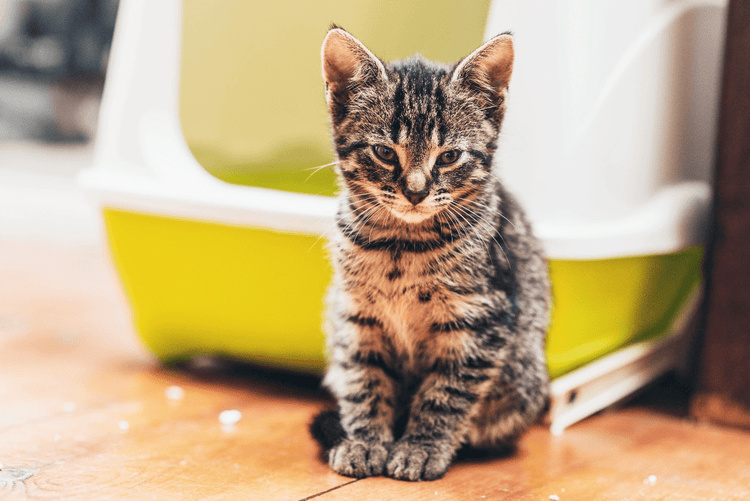
Dyschezia (Painful Defecation) in Cats
Dyschezia is the medical term used to describe painful or difficult defecation. There are a variety of causes of dyschezia. Some cats have temporary dyschezia but in others, difficult defecation may represent a more severe illness. For this reason, dyschezia should not be ignored and should be addressed if it persists or worsens.
Painful defecation usually arises with some disorder of the colon or rectum. It can also occur when there is some physical impediment to defecation in the area of anus or perineum (area around the anus under the tail). Because the colon and rectum pass through the canal formed by the pelvic bones, fractures, dislocations and diseases of the pelvis may also result in dyschezia.
In the cat, dyschezia may be confused with pain upon urination (dysuria) or difficulty urinating (stranguria). Cats are very prone to lower urinary tract infections and disease, and in the male cat this may result in obstruction of the urinary tract. Cats that cannot urinate often have clinical signs that are easily mistaken for difficulty defecating, or for pain upon defecation. Such signs warrant immediate examination by your veterinarian, as urinary tract obstruction can be rapidly fatal.
Causes of Painful Defecation in Cats
The following conditions may lead your cat to suffer from painful defecation:
- Constipation or obstipation (severe constipation)
- Colitis or proctitis (inflammation of the colon/rectum)
- Masses within the colon or rectum and at the anus or perianal area, such as cancers or polyps
- Foreign bodies within the colon or rectum
- Strictures (narrowing) of the colon, rectum or anus
- Anal sac infection, abscessation, or cancer (uncommon in the cat)
Perineal hernia, which is herniation of tissue from within the pelvis into the soft tissues behind the hip (rare in cats) - Pseudocoprostasis where hair around the anus becomes matted with feces (common especially in longhaired cats)
- Masses, fractures, injuries or infections of the pelvic bones
Dyschezia Symptoms
Cat owners concerned about painful defecation should watch out for the following warning signs:
- Distress and vocalization during defecation
- Excessive straining associated with defecation
- Reluctance to defecate
- Fresh blood in the stool
- Weight loss
- Poor appetite
- Diarrhea
Diagnosis of Dyschezia in Cats
To diagnose dyschezia and/or determine the underlying cost, your veterinarian may conduct some or all of the following examinations:
- Thorough medical history and physical, with palpation of the abdomen, digital rectal palpation, and close examination of the anus and perineum
- Complete blood count (CBC)
- Biochemical profile
- Urinalysis
- Fecal examination
- Abdominal and pelvic radiographs (X-rays)
- Possibly abdominal ultrasonography
- Colonoscopy or proctoscopy – examination of the colon and rectum with either a rigid or flexible scope
Treatment of Dyschezia in Cats
There are several things your veterinarian might prescribe to treat your pet symptomatically; however, depending on the underlying cause of dyschezia, a more specific therapy may be recommended. Here are a few procedures your cat may undergo as treatment for their dyschezia:
- Clipping the hair and washing the perineal area may be of benefit in some cases of perineal and rectal disorders.
- Enemas, fluid therapy, and/or stool softeners may be used to treat constipation and obstipation. Relief of obstipation may require general anesthesia and the administration of high enemas.
- Stool softeners may also be helpful in the management of strictures, and during the healing of pelvic fractures.
- Dietary management (such as increasing the fiber in the food, or altering the type of food) may be of benefit in certain cases of colonic disease, particularly colitis and proctitis.
- Antibiotic therapy is administered for certain colonic and rectal infections.
- Surgical intervention may be necessary in disorders such as foreign bodies, certain pelvic fractures, tumors, and strictures.
Home Care for Cats with Dyschezia
Administer any prescribed medications as directed by your veterinarian. Follow dietary recommendations and observe your cat’s general activity and appetite. Watch closely for the presence of blood in the stool or a worsening of signs. If pseudocoprostatis was the source of the dyschezia, then continue to cut or clip the hair from away from the anal area, especially in longhaired cats.